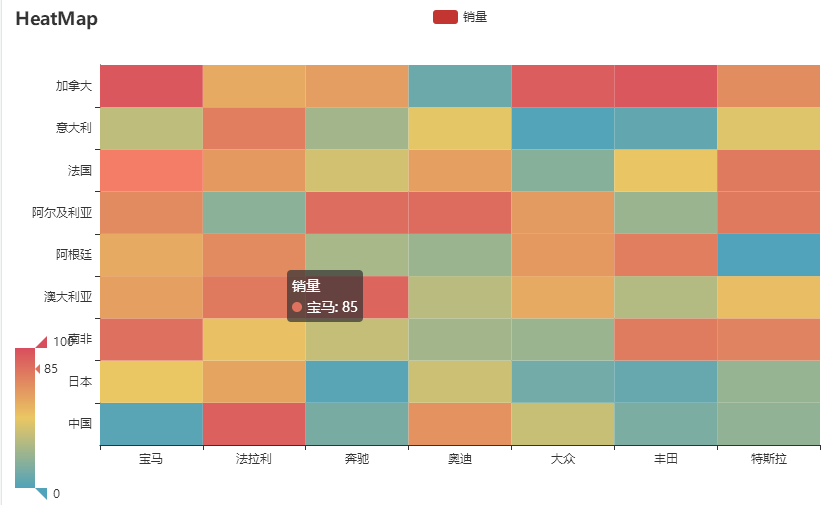pyecharts绘制图形
首先安装pip install pyecharts ,pyecharts十分方便,几行代码就能绘制出有特色的的图形,绘图API链式调用,使用方便。
1 仪表盘
from pyecharts import charts # 仪表盘 gauge = charts.Gauge() gauge.add('Python小例子', [('Python机器学习', 10), ('Python基础', 30.), ('Python正则', 20)]) gauge.render(path="./data/仪表盘.html") print('ok')
仪表盘中共展示三项,每项的比例为10%,30%,20%,如下图默认名称显示第一项:Python机器学习,完成比例为10%
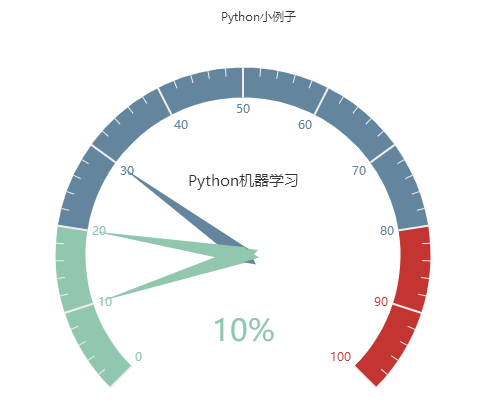
2 漏斗图
from pyecharts import options as opts from pyecharts.charts import Funnel, Page from random import randint def funnel_base() -> Funnel: c = ( Funnel() .add("豪车", [list(z) for z in zip(['宝马', '法拉利', '奔驰', '奥迪', '大众', '丰田', '特斯拉'], [randint(1, 20) for _ in range(7)])]) .set_global_opts(title_opts=opts.TitleOpts(title="豪车漏斗图")) ) return c funnel_base().render('./data/car_funnel.html') print('ok')
以7种车型及某个属性值绘制的漏斗图,属性值大越靠近漏斗的大端。
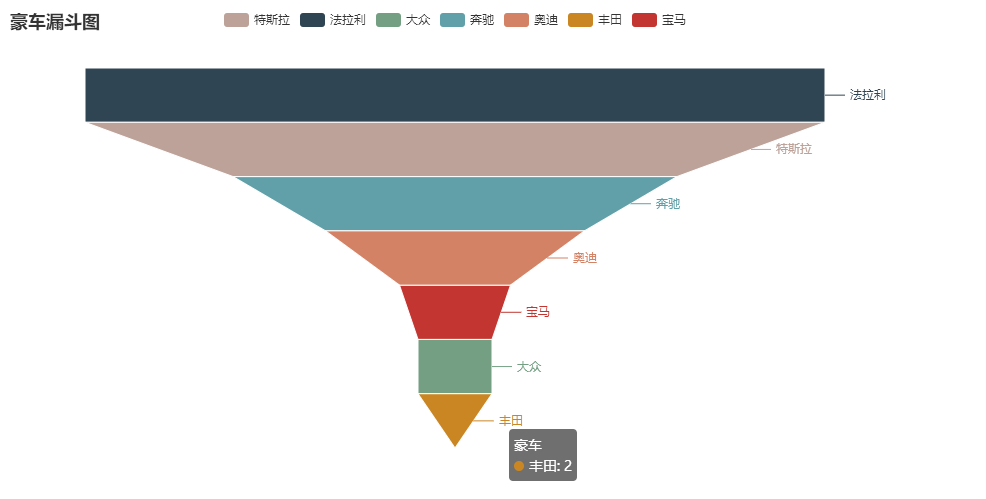
3 日历图
import datetime import random from pyecharts import options as opts from pyecharts.charts import Calendar def calendar_interval_1() -> Calendar: begin = datetime.date(2019, 1, 1) end = datetime.date(2019, 12, 27) data = [ [str(begin + datetime.timedelta(days=i)), random.randint(1000, 25000)] for i in range(0, (end - begin).days + 1, 2) # 隔天统计 ] calendar = ( Calendar(init_opts=opts.InitOpts(width="1200px")).add( "", data, calendar_opts=opts.CalendarOpts(range_="2019")) .set_global_opts( title_opts=opts.TitleOpts(title="Calendar-2019年步数统计"), visualmap_opts=opts.VisualMapOpts( max_=25000, min_=1000, orient="horizontal", is_piecewise=True, pos_top="230px", pos_left="100px", ), ) ) return calendar calendar_interval_1().render('./data/calendar.html') print('ok')
绘制2019年1月1日到12月27日的步行数,官方给出的图形宽度900px不够,只能显示到9月份,本例使用opts.InitOpts(width="1200px")做出微调,并且visualmap显示所有步数,每隔一天显示一次:

4 图(graph)
import json import os from pyecharts import options as opts from pyecharts.charts import Graph, Page def graph_base() -> Graph: nodes = [ {"name": "cus1", "symbolSize": 10}, {"name": "cus2", "symbolSize": 30}, {"name": "cus3", "symbolSize": 20} ] links = [] for i in nodes: if i.get('name') == 'cus1': continue for j in nodes: if j.get('name') == 'cus1': continue links.append({"source": i.get("name"), "target": j.get("name")}) c = ( Graph() .add("", nodes, links, repulsion=8000) .set_global_opts(title_opts=opts.TitleOpts(title="customer-influence")) ) return c
graph_base().render('./data/graph.html')
print('ok')
构建图,其中客户点1与其他两个客户都没有关系(link),也就是不存在有效边:
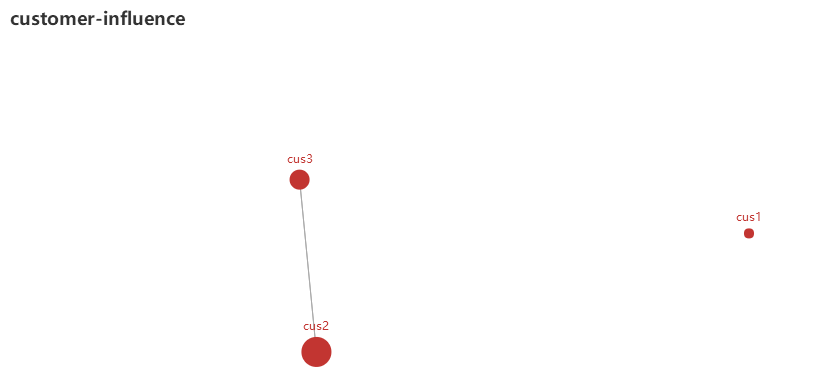
5 水球图
from pyecharts import options as opts from pyecharts.charts import Liquid, Page from pyecharts.globals import SymbolType def liquid() -> Liquid: c = ( Liquid() .add("lq", [0.67, 0.30, 0.15]) .set_global_opts(title_opts=opts.TitleOpts(title="Liquid")) ) return c liquid().render('./data/liquid.html')
水球图的取值[0.67, 0.30, 0.15]表示下图中的三个波浪线,一般代表三个百分比:
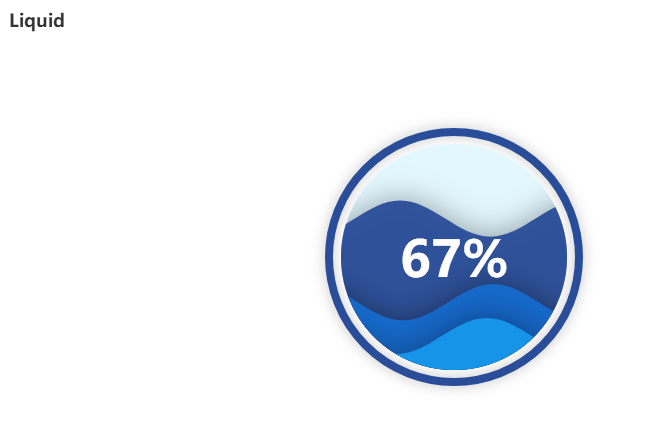
6 饼图
from pyecharts import options as opts from pyecharts.charts import Pie from random import randint def pie_base() -> Pie: c = ( Pie() .add("", [list(z) for z in zip(['宝马', '法拉利', '奔驰', '奥迪', '大众', '丰田', '特斯拉'], [randint(1, 20) for _ in range(7)])]) .set_global_opts(title_opts=opts.TitleOpts(title="Pie-基本示例")) .set_series_opts(label_opts=opts.LabelOpts(formatter="{b}: {c}")) ) return c pie_base().render('./data/pie_pyecharts.html')
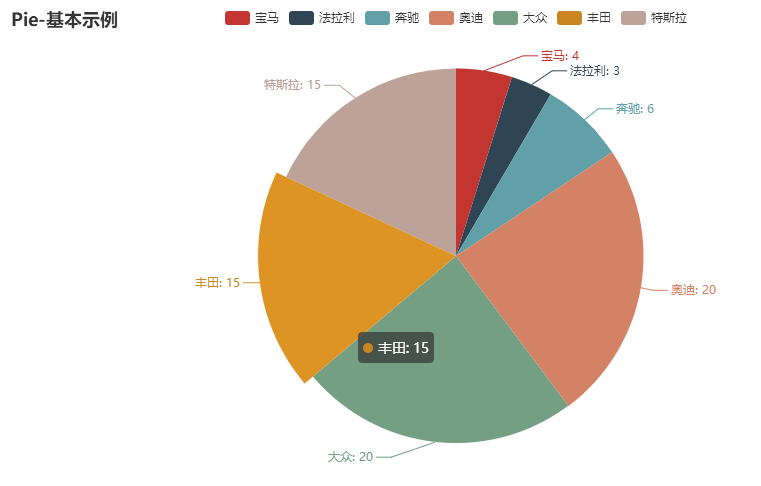
7 极坐标
import random from pyecharts import options as opts from pyecharts.charts import Page, Polar def polar_scatter0() -> Polar: data = [(alpha, random.randint(1, 100)) for alpha in range(101)] # r = random.randint(1, 100) print(data) c = ( Polar() .add("", data, type_="bar", label_opts=opts.LabelOpts(is_show=False)) .set_global_opts(title_opts=opts.TitleOpts(title="Polar")) ) return c polar_scatter0().render('./data/polar.html')
极坐标表示为(夹角,半径),如(6,94)表示"夹角"为6,半径94的点:
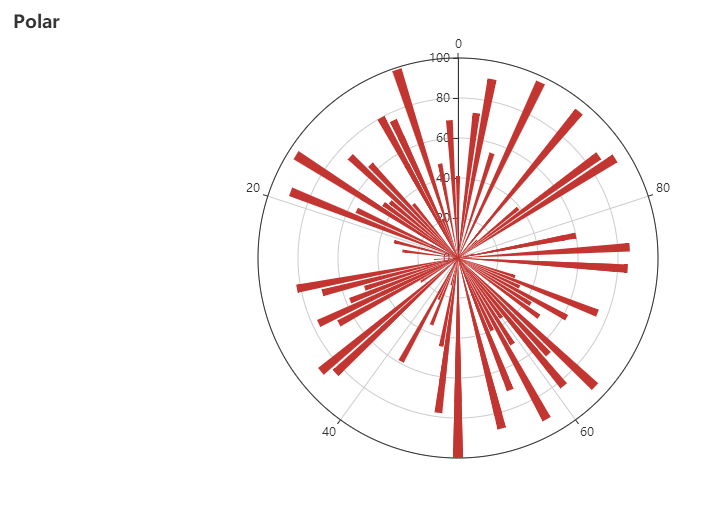
8 词云图
from pyecharts import options as opts from pyecharts.charts import Page, WordCloud from pyecharts.globals import SymbolType words = [ ("Python", 100), ("C++", 80), ("Java", 95), ("R", 50), ("JavaScript", 79), ("C", 65) ] def wordcloud() -> WordCloud: c = ( WordCloud() # word_size_range: 单词字体大小范围 .add("", words, word_size_range=[20, 100], shape='cardioid') .set_global_opts(title_opts=opts.TitleOpts(title="WordCloud")) ) return c wordcloud().render('./data/wordcloud.html')
("C",65)表示在本次统计中C语言出现65次

9 系列柱状图
from pyecharts import options as opts from pyecharts.charts import Bar from random import randint def bar_series() -> Bar: c = ( Bar() .add_xaxis(['宝马', '法拉利', '奔驰', '奥迪', '大众', '丰田', '特斯拉']) .add_yaxis("销量", [randint(1, 20) for _ in range(7)]) .add_yaxis("产量", [randint(1, 20) for _ in range(7)]) .set_global_opts(title_opts=opts.TitleOpts(title="Bar的主标题", subtitle="Bar的副标题")) ) return c bar_series().render('./data/bar_series.html')
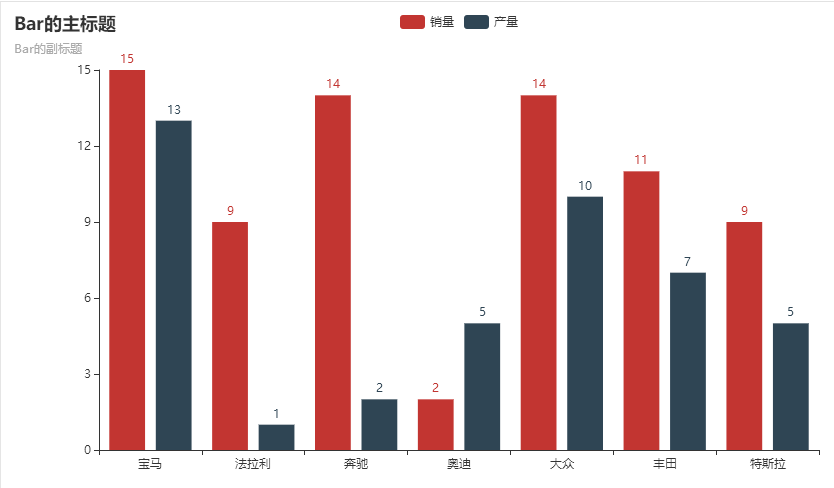
10 热力图
import random from pyecharts import options as opts from pyecharts.charts import HeatMap def heatmap_car() -> HeatMap: x = ['宝马', '法拉利', '奔驰', '奥迪', '大众', '丰田', '特斯拉'] y = ['中国','日本','南非','澳大利亚','阿根廷','阿尔及利亚','法国','意大利','加拿大'] value = [[i, j, random.randint(0, 100)] for i in range(len(x)) for j in range(len(y))] c = ( HeatMap() .add_xaxis(x) .add_yaxis("销量", y, value) .set_global_opts( title_opts=opts.TitleOpts(title="HeatMap"), visualmap_opts=opts.VisualMapOpts(), ) ) return c heatmap_car().render('./data/heatmap_pyecharts.html')
